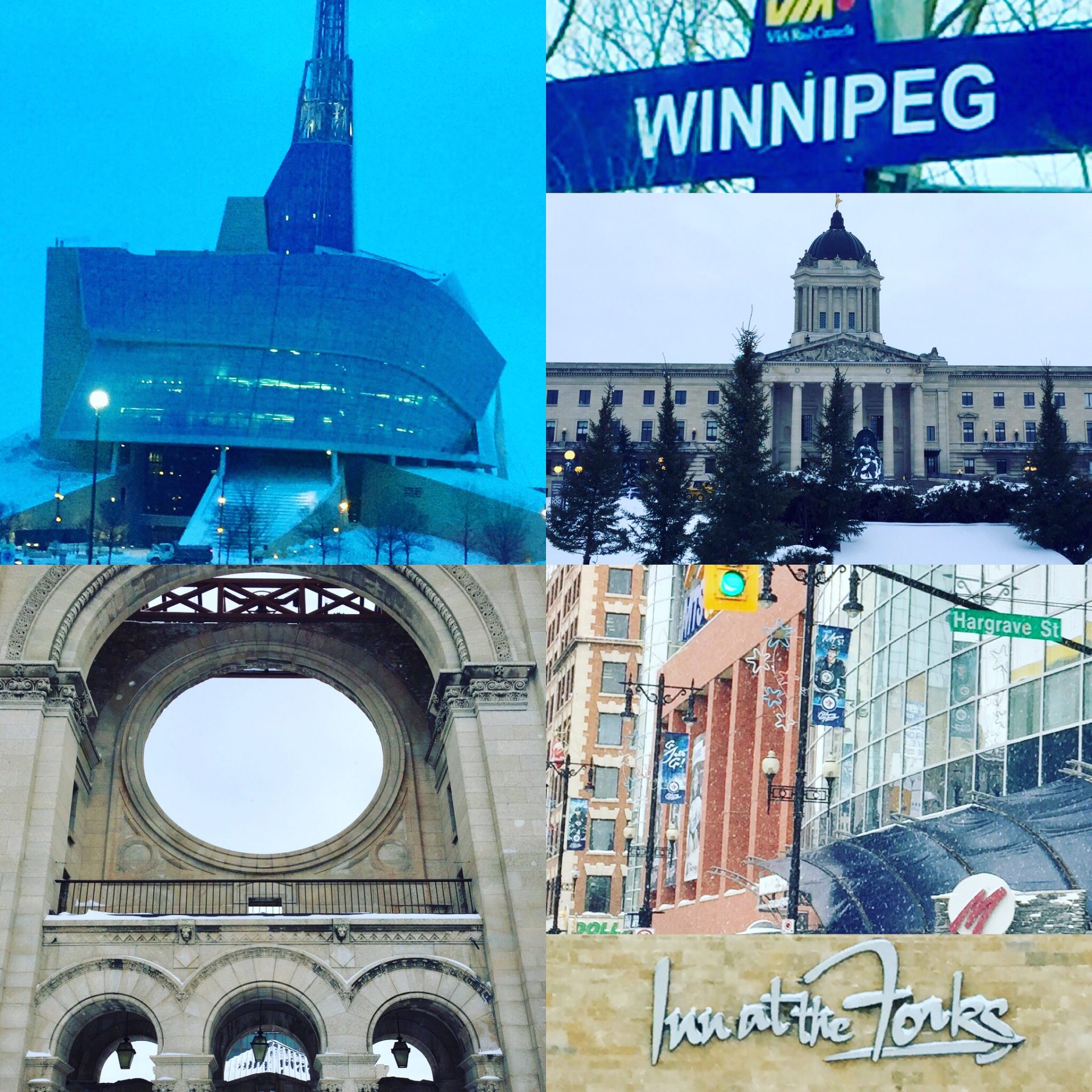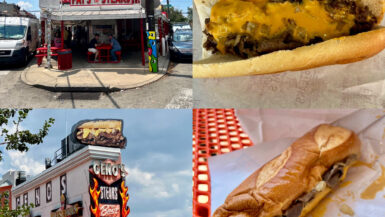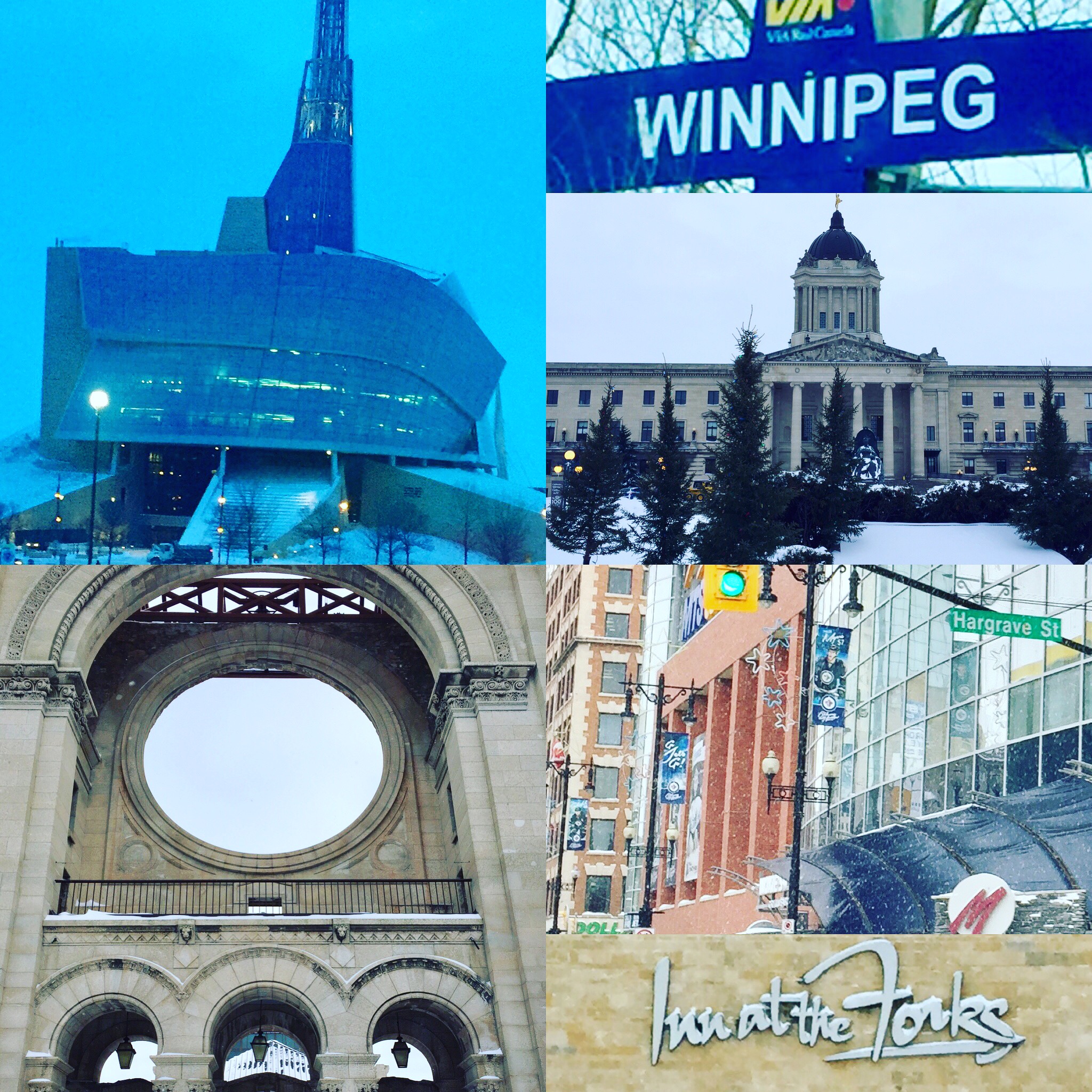
My 31st birthday arrived on a dark and frigid Thursday morning in the city of Winnipeg. When my alarm clock went off, the sun hadn’t even risen but in lieu of sunlight, the numerous skyscrapers and their neon marquees shone beautifully in the cold morning air. I couldn’t sleep a wink last night; I was too excited to doze off and all I could think about was spending my birthday in Manitoba’s capital city. Gee, there’s a phrase I never thought I would utter.
One hot shower and a quick cup of coffee later, my mom and I stepped off the train and into a frosty 14 F degree weather. But this being Canada, it was -10 C. Brrrrr! Inside the Via rail station, we were introduced to Michelle, our tour guide to the wonderful world of Winnipeg. As we were introduced to Michelle, we bid adieu to our Via rail crew members, Dan and Walter, the two lovable Canucks who helped us on board in Toronto. Since this was the mid-point of our journey, we were receiving two new crew-members. Think of this as Via Rail’s version of the changing of the guards. I will always remember Walter as “Retlaw”, since Dan jokingly put his partner’s name tag on upside-down!
Our tour started behind the station in the famous part of the city known as “The Forks.” The name comes from the fact that Winnipeg is a city built around the juncture point of where two rivers, the Red and the Assiniboine, meet, or fork. While scenic, this usually puts the city at risk for flooding during the warmer months in summer when rain is heavy. Around The Forks area, there was the Forks Market, one of Canada’s largest indoor marketplaces along with the Inn at the Forks Hotel. Michelle explained to us how much of Winnipeg was built not just by the fur trade and the rivers, but by a famous philanthropist named Israel “Izzy” Jasper. Asper was a Canadian tax lawyer and media magnate. He was the founder of the now defunct CanWest Global Communications Corp and he was also the leader of the Manitoba Liberal Party from 1970 to 1975. Born to a Jewish family, the son of musicians who emigrated from Ukraine and fled the Holocaust, Asper was a noted politician, law school graduate from the University of Winnipeg, media magnate, and was known for his fierce loyalty to Manitoba. He refused moving his businesses to Toronto, he donated millions of dollars to various schools and hospitals, was a voice for Canada’s Jewish population, and in 1995, he was given one of Canada’s highest honors: being decorated with the medal of the Order of Canada for his many contributions to the arts, education, and business. He tragically died from a heart attack in 2003 at the age of 71. One of his last great contributions he made to both Manitoba and Canada was creating the idea and vision to establish the Canadian Museum for Human Rights, the next stop on our tour.
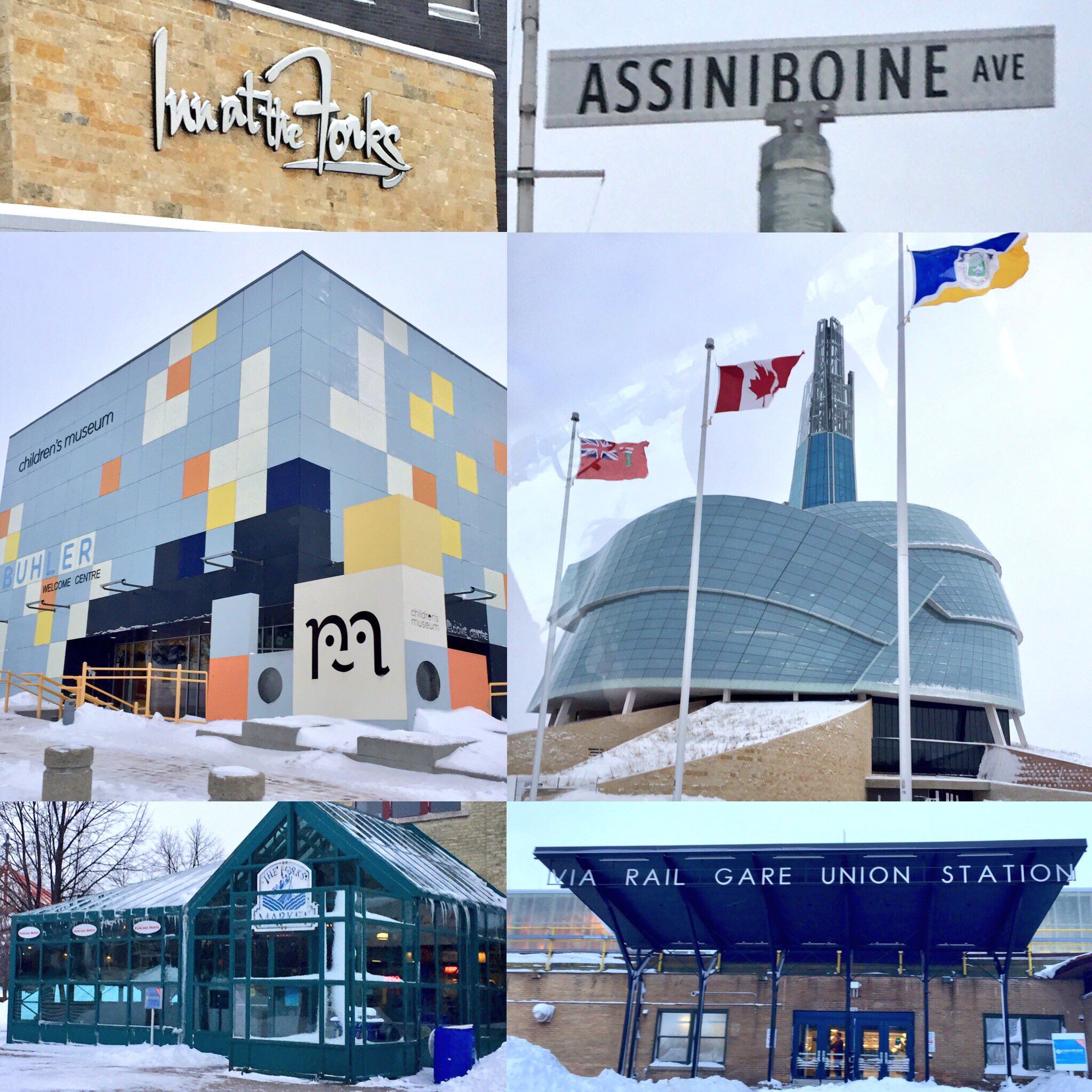
Completed in 2014, this magnificent structure became Canada’s first national museum to be located outside of Ottawa, the nation’s capital. It is Canada’s first museum, national museum nonetheless, to be homage to the plight of human rights, suffering, civil rights, and the many injustices that have occurred throughout the world. Funded by Asper’s fortunes and designed by noted architect Antoine Perdock, the inspiration for the CMHR came from the natural scenery and open spaces in Canada, including trees, ice, northern lights, First Nations peoples in Canada, and the rootedness of human rights action. What’s more, this museum has given Winnipeg a disntinct skyline and trademark building, much like Toronto with the CN Tower and Sydney with its Opera House.
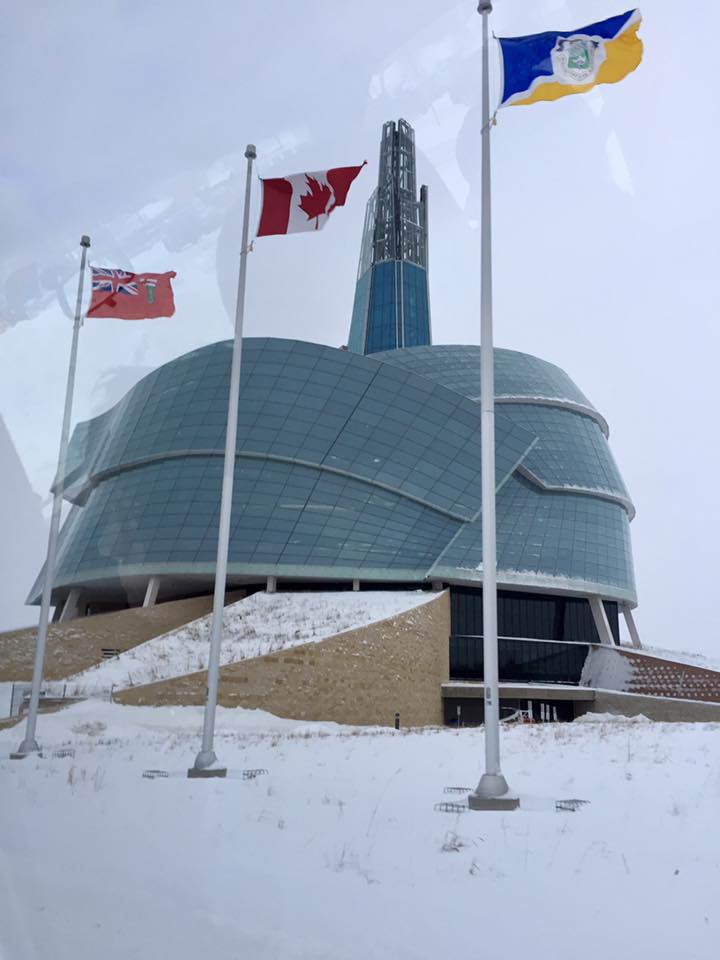
From the historic center of Winnipeg, we drove to the political center of Winnipeg at the Manitoba Legislative Building, the seat of power of the Canadian province. It was grand and marvelous building which was adorned with a statue of gold on top dubbed the “Golden Boy.” It was originally named the Manitoba Parliament Building, not Legislative. The neoclassical building was completed in 1920 and stands 77 meters tall (253 ft). It was designed and built by Frank Worthington Simon and Henry Boddington III, along with other masons and many skilled craftsmen. The building is famous for the Golden Boy, a gold covered bronze statue based on the style of the Roman god Mercury, or the Greek god Hermes, at the top of the cupola, or domed ceiling. Each one of the four corners of the copper dome supporting the Golden Boy has a stonework grouping representing the four elements of alchemy, earth, air, fire and water. They are identified as Agriculture, Science, Industry and Art. The dome is 223 ft. 7 in. (68.15 m) above the main floor. The height of the central tower without the Golden Boy is 242 feet (74 m). The statue was first installed in 1919, originally called Eternal Youth, and sculpted by Parisian artist Georges Gardet. The Golden Boy was last regilded and refurbished in 2002, and is illuminated by floodlights.
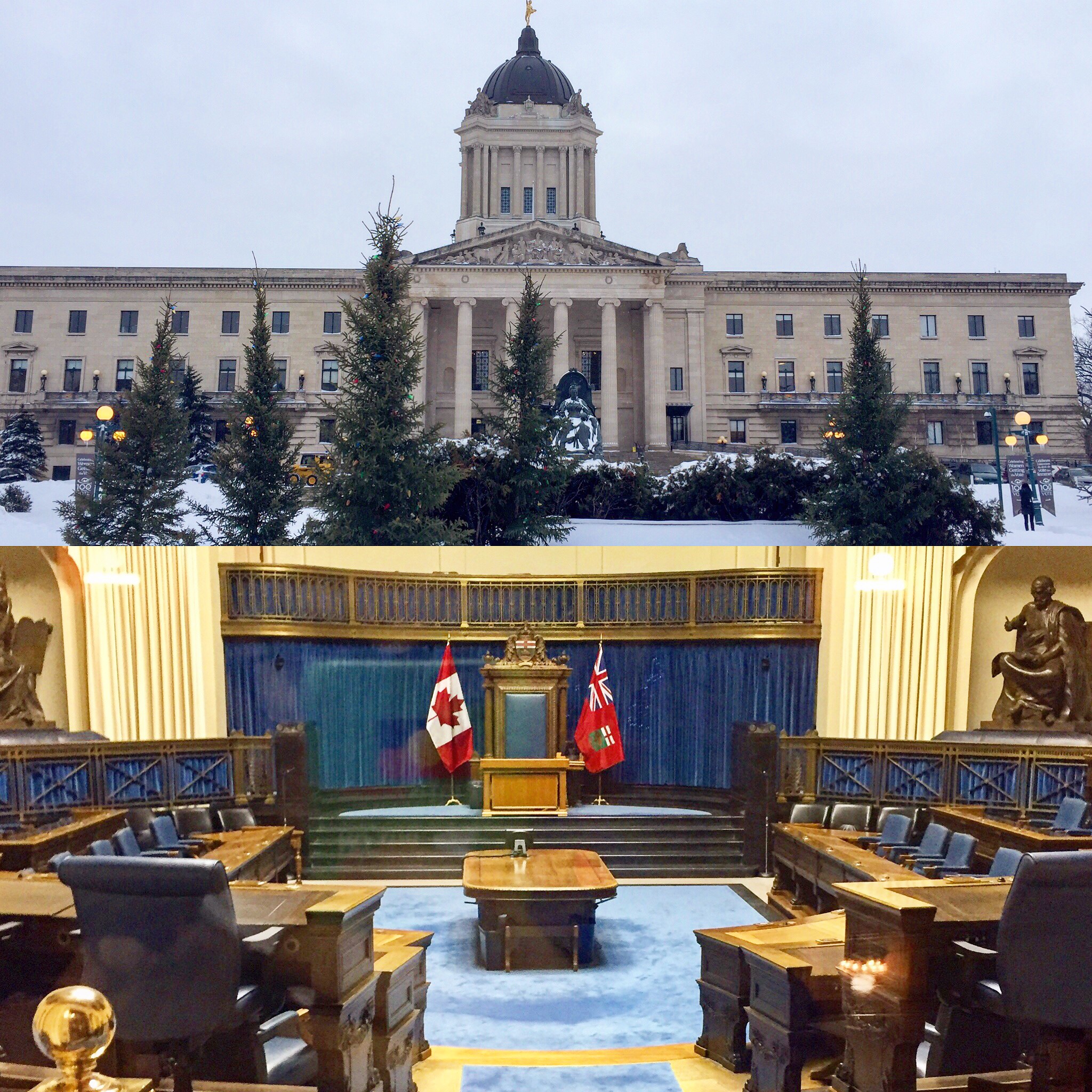
Inside, however, it was clear that this building was more than just a piece of neo-classical eye-candy. Each footstep echoed beautifully throughout the rotunda, from the front doors of the building to the assembly room in the back. Within the main entrance is the Grand Staircase. This is a perfectly square room measuring 66.6 feet on each side, which is meant to represent the numerological number 666, which are all the numbers added from one to 36, which is the square of 6, in mathematics, geometry, and arithmetic. The staircase is composed of three flights of steps each with 13 steps. The steps are brown-veined Carrara marble, the finest marble in the world. Flanking the steps are life size North American bison. Made of solid bronze, they were modeled by Georges Gardet, creator of the Golden Boy, and cast at the Roman Bronze Works in New York City. Each bison weighs 2½ tons (5,000 pounds). Legend has it that to install the bison safely without damaging the marble floors, the main entrance was flooded and left to freeze. Both bison were then placed on enormous slabs of ice cut from the Assiniboine River, and safely slid into the building.
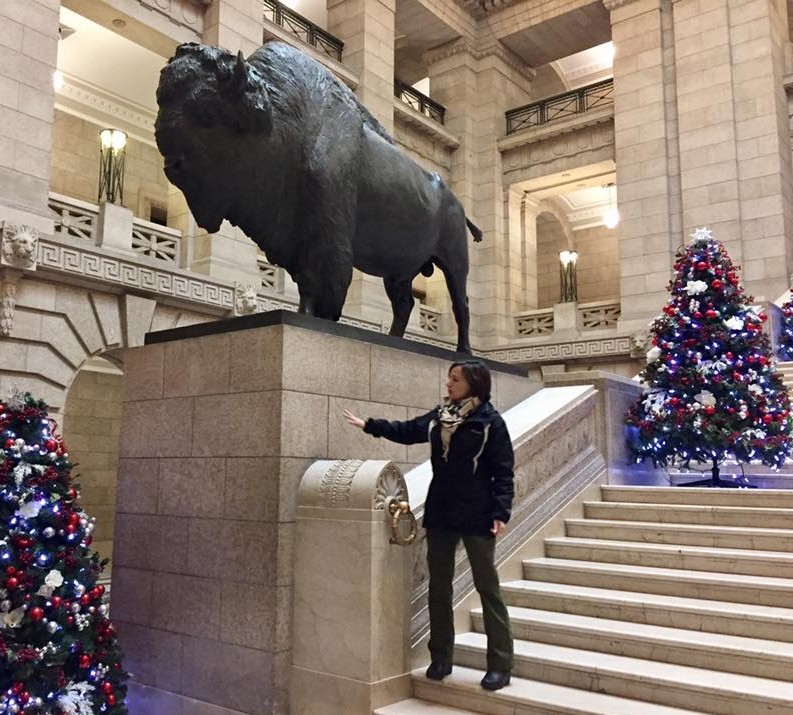
The bison, a symbol of the Province of Manitoba, are meant to represent the sacred bulls which guard temple entrances. Above the south entrance to the legislature lobby is the Medusa’s head, and over the north entrance facing Medusa is the bust of Athena, Greek goddess of war, embodiment of democracy and also the protector of cities. Around the perimeter of the room are 14 lion heads and 8 cattle skulls at the edge of the ceiling. Around the second floor balcony, lamps rise from the balustrades, each containing 13 bulbs, 12 around 1 (Twelve Apostles and Jesus). The third floor facing the Grand Staircase is supported by two pairs of columns, reproductions of the caryatids, sculpted female figures serving as an architectural support taking the place of a column or a pillar. The ceiling is made of a glass atrium to allow natural sunlight to illuminate the room.
Since my day in Winnipeg is such a long one (and since the city has SO MANY sights) I will end my article here and continue it in another one. Stay tuned for more fun in Winnipeg!
TO BE CONTINUED…
